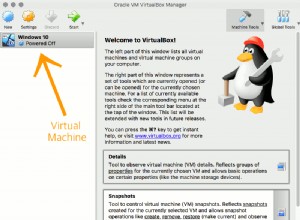Ich schreibe diese Antwort, weil ich denke, dass wir beide die Benutzerkontenverwaltung
Initialisieren Sie das Mariadb-Datenbankverzeichnis mit dem Benutzerkonto „mysql“ :
$ sudo mysql_install_db --user=mysql --basedir=/usr --datadir=/var/lib/mysql
...
Two all-privilege accounts were created.
One is [email protected], it has no password, but you need to
be system 'root' user to connect. Use, for example, sudo mysql
The second is [email protected], it has no password either, but
you need to be the system 'mysql' user to connect.
After connecting you can set the password, if you would need to be
able to connect as any of these users with a password and without sudo
...
Wie Sie sehen können, zwei Mariadb All-Privilege-Konten, [email protected] und [email protected] , wurden erstellt. Und Sie müssen Betriebssystem-root sein und mysql Benutzer, diese beiden Mariadb-Konten zu verwenden.
Aktivieren und starten Sie danach den Mariadb-Server :
$ sudo systemctl enable --now mariadb.service
Sie können mysql_secure_installation verwenden Befehl, um die Anfangssicherheit zu verbessern
.
Verwenden Sie dann mariadb [email protected] Konto mit System root Konto, um sich mit dem Server zu verbinden, und erstellen Sie ein neues mariadb-Konto mit root -ähnliche Privilegien
mit beliebigem Namen:
$ sudo mysql -u root -p # first input your passwd to use 'sudo', then [ENTER] for empty mariadb root account passwd
[sudo] password for your_service_account:
Enter password:
...
MariaDB [(none)]> CREATE USER 'whatever_name_you_want'@'localhost' IDENTIFIED BY 'somepasswd';
Query OK, 0 rows affected (0.004 sec)
MariaDB [(none)]> GRANT ALL PRIVILEGES ON *.* to 'whatever_name_you_want'@'localhost';
Query OK, 0 rows affected (0.004 sec)
MariaDB [(none)]> quit
Bye
Verwenden Sie das neue unprivilegierte [email protected] Konto, um sich mit dem Server zu verbinden und eine neue Datenbank zu erstellen:
$ mysql -u whatever_name_you_want -p
Enter password:
...
MariaDB [(none)]> CREATE DATABASE IF NOT EXISTS mydb;
Query OK, 1 row affected (0.001 sec)
MariaDB [(none)]> quit
Bye
Und wenn Sie ein Passwort für [email protected] Konto, Sie können dieses Konto sogar ohne sudo :
$ sudo mysql -u root -p
[sudo] password for your_service_account:
Enter password:
...
MariaDB [(none)]> SET PASSWORD FOR 'root'@'localhost' = PASSWORD('somepasswd');
Query OK, 0 rows affected (0.041 sec)
MariaDB [(none)]> quit
Bye
$ mysql -u root -p
Enter password:
...
MariaDB [(none)]> quit
Bye




